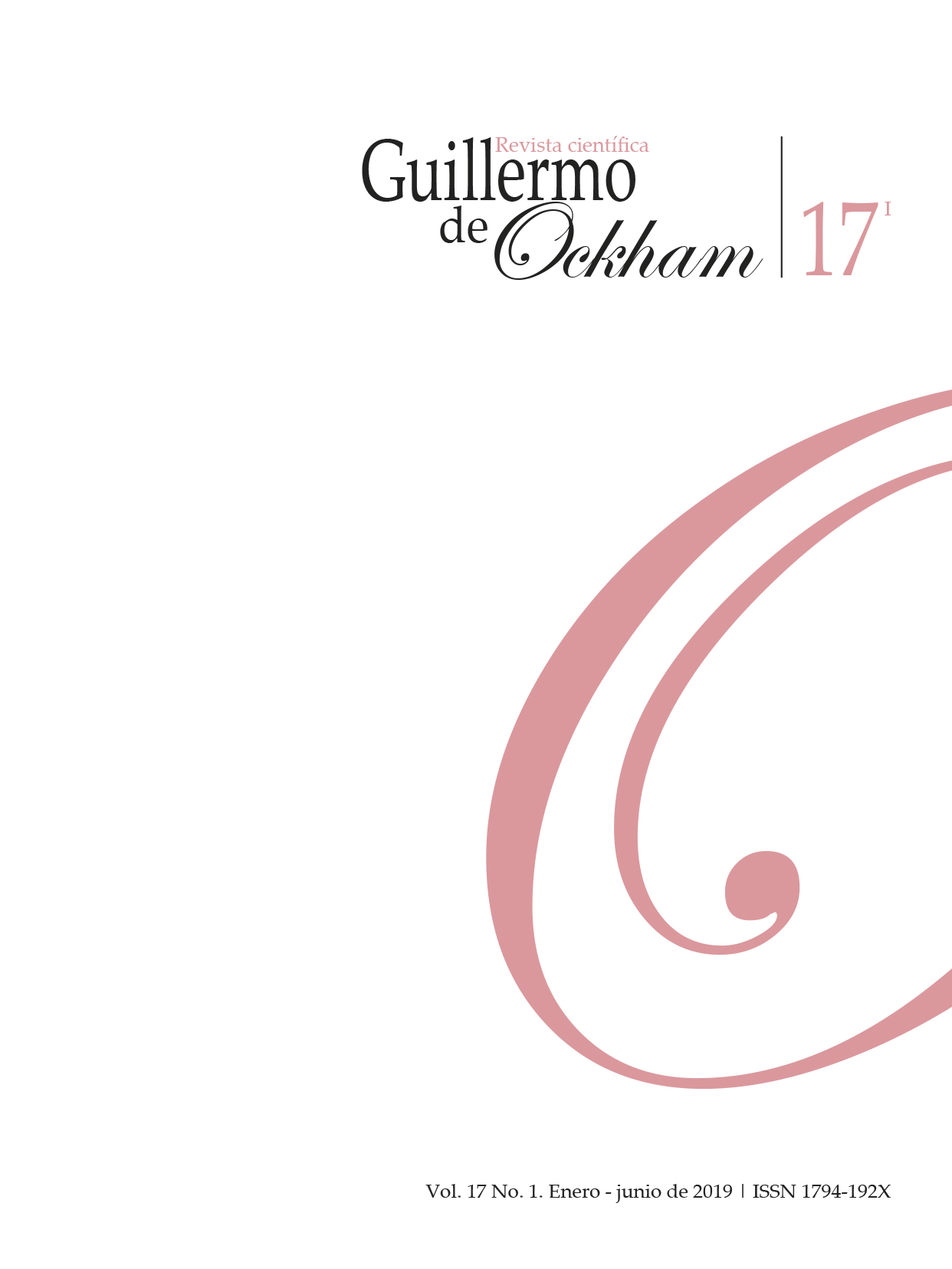The Revista Guillermo de Ockham provides an immediate and open access to its content, based on the principle of offering the public a free access to investigations to provide a global interchange of knowledge.
Unless otherwise established, the contents of this journal has a license with Creative Commons Attribution-NonCommercial-NoDerivatives 4.0 International (CC BY-NC-ND 4.0) http://creativecommons.org/licenses/by-nc-nd/4.0/
- Attribution: You must give appropriate credit, provide a link to the license, and indicate if changes were made. You may do so in any reasonable manner, but not in any way that suggests the licensor endorses you or your use.
- NonCommercial: You may not use the material for commercial purposes.
- NoDerivatives: If you remix, transform, or build upon the material, you may not distribute the modified material.
- No additional restrictions: You may not apply legal terms or technological measures that legally restrict others from doing anything the license permits.
Abstract
‘The mystery of the Most Holy Trinity is the central mystery of Christian faith and life ... the source of all the other mysteries of faith, the light that enlightens them.’ This passage from the teaching of the Catechism of the Catholic Church (CCC) (234) on the profession of faith identifies the core principles and underlying recognition of Catholics regarding belief in a triune God – one God existent in three Persons: Father, Son and Holy Spirit. In addressing the people of Ephesus, St. Ignatius of Antioch (also known as Theophorus) said, faithful Christians were ‘being stones of the temple of the Father, prepared for the building of God the Father, and drawn up on high by the instrument of Jesus Christ, which is the cross, making use of the Holy Spirit as a rope, while your faith was the means by which you ascended, and your love the way which led up to God.’ (Ignatius of Antioch, 2014, loc. 4027.) St. Ignatius goes on to say, ‘the Holy Spirit does not speak His own things, but those of Christ, and that not from himself, but from the Lord’. The point St. Ignatius was making is that the three Persons of the triune God are integrally connected, and it is through the grace of the three-in-One that salvation is gained. Hence, the Trinity is the core of the Christian faith, but from the very beginning the faithful relied on metaphor to explain and help others understand how Three could be One
































